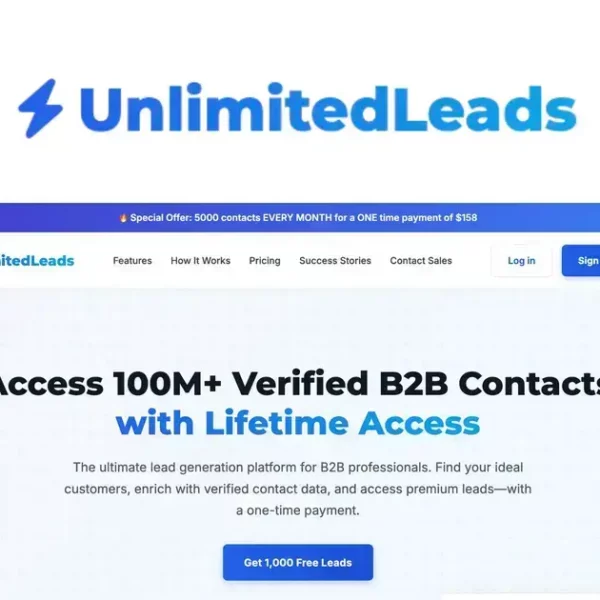A client management database is a powerful tool that centralizes client information, streamlining communication and enhancing relationships. It provides insights, improves efficiency, and facilitates better decision-making, making it essential for businesses to thrive in a competitive landscape.
A client management database is essential for any business aiming to improve efficiency and foster strong client relationships. This dynamic tool allows companies to store, organize, and analyze customer information seamlessly, enhancing both sales and support teams. In this article, we’ll delve into the significance of client management databases, their benefits, best practices for setup, and effective training methods for your team.
What is a Client Management Database?
A client management database is a system that allows businesses to store and manage information about their clients efficiently. This database serves as a central repository for data, enabling companies to track interactions, preferences, and transactions with customers.
Key Features of Client Management Databases
Most client management databases come equipped with features such as contact management, sales tracking, and reporting tools. These tools help businesses better understand their clients by providing insights into past interactions and future opportunities.
Importance in Business Operations
Utilizing a client management database can vastly improve workflow by reducing the time spent searching for client information. Staff can quickly find details they need, facilitating better communication and faster responses to client inquiries.
How They Work
Client management databases organize information in a structured format, often using categories and tags for easy navigation. They can integrate with other business tools like email and marketing platforms, ensuring a seamless flow of information.
Types of Client Management Databases
There are many types of client management databases available in the market, including cloud-based solutions and on-premise software. Each offers different functionalities but generally aims to enhance client relationship management.
Benefits of Using a Client Management Database

Using a client management database provides numerous benefits that can significantly enhance business operations and client relationships. Here are some key advantages:
Streamlined Communication
Client management databases ensure that all team members have access to up-to-date information about clients. This accessibility leads to better communication and fewer misunderstandings, fostering a stronger relationship with clients.
Improved Customer Insights
These databases collect valuable data about customer preferences, behaviors, and history. Analyzing this information allows businesses to tailor their services and communications, making clients feel valued and understood.
Enhanced Efficiency
By automating routine tasks such as data entry and follow-ups, a client management database frees up time for employees. This enables them to focus on more strategic initiatives that drive growth and customer satisfaction.
Centralized Information
Having client information unified in one database minimizes the risk of losing critical data. This centralization helps organizations respond quickly to inquiries and provides a clear history of client interactions.
Performance Tracking and Reporting
Client management databases often include reporting features that help track performance metrics related to client interactions and sales. By analyzing these reports, businesses can make better-informed decisions and identify areas for improvement.
Best Practices for Client Management Database Setup
Setting up a client management database correctly is vital for maximizing its benefits. Here are some best practices to follow:
Define Your Objectives
Before implementation, clearly define what you want to achieve with your client management database. Whether it’s improving customer service, tracking sales, or analyzing client behavior, having a clear goal will shape your database setup.
Choose the Right Software
Based on your defined objectives, select software that meets your business needs. Consider factors like usability, scalability, and integration with existing tools to ensure a smooth transition.
Data Quality and Entry Standards
Establish data entry standards to maintain data quality. Train your team on how to input information correctly to avoid inaccuracies that could hinder effective client management.
Segmentation and Organization
Organize client data into relevant categories and segments. This allows for easier access and management of information, helping your team to quickly find the details they need.
Regularly Review and Update
Plan for regular reviews of your database to ensure it stays up to date. This includes removing outdated information and adding new data to keep everything relevant and useful for decision-making.
Top Client Management Database Software

There are many options when it comes to client management database software. Choosing the right solution for your business can greatly enhance your client interactions. Here are some of the top software options:
Salesforce
Salesforce is one of the leading client management systems available. It offers a comprehensive suite of tools for managing customer data, sales tracking, and customer service. Its cloud-based platform allows for easy access on various devices.
HubSpot CRM
HubSpot CRM is a user-friendly tool that helps businesses organize and manage client interactions. It is particularly beneficial for small businesses due to its free version and scalability. It integrates easily with marketing tools, making it a versatile choice.
Zoho CRM
Zoho CRM represents a good option for businesses looking for an affordable, feature-rich platform. It includes capabilities like lead management, analytics, and automation, which streamline client management processes.
Insightly
Insightly is designed for project management and client relationship management. It offers effective tools for tracking projects along with client information, making it suitable for service-based businesses.
Microsoft Dynamics 365
This robust solution combines sales and customer service efforts into one platform. It offers powerful analytics and reporting features, making it ideal for larger businesses with complex needs.
How to Train Your Team on Client Management Databases
Training your team on how to use a client management database effectively is essential for maximizing its potential. Here are some effective strategies for training:
Start with the Basics
Begin by explaining the purpose of the client management database. Discuss its features, benefits, and how it can improve client interactions and overall workflow.
Hands-On Training Sessions
Utilize hands-on training sessions that allow employees to work directly with the database. Create scenarios that mimic real business situations, enabling them to practice using the software in a controlled environment.
Create User Guides and Tutorial Videos
Develop written user guides and short tutorial videos covering different aspects of the database. These resources can serve as handy references for team members when they encounter challenges during their daily tasks.
Encourage Questions and Feedback
Foster an open environment where team members feel comfortable asking questions. Encourage feedback on the training process to identify areas that may require additional focus or clarification.
Regular Refresher Courses
Schedule periodic refresher courses to keep everyone updated on new features and best practices. This helps reinforce skills and ensures that the team remains proficient in using the client management database.
In summary, leveraging a Client Management Database is key
A client management database can transform how your business manages client relationships and operations. By streamlining communication, improving customer insights, and enhancing overall efficiency, it becomes an invaluable tool.
Implementing best practices when setting up the database and training your team effectively will lead to better results. Use the right software that fits your needs and ensure that everyone is well-prepared to use it.
In the end, prioritizing client management can set your business apart, leading to stronger relationships and increased success.
FAQ – Frequently Asked Questions about Client Management Databases
What is a client management database?
A client management database is a system used to store and manage information about clients, improving communication and workflow.
How can a client management database improve customer relationships?
By providing centralized and up-to-date client information, it enables better communication and personalized interactions, enhancing customer satisfaction.
What are some benefits of using a client management database?
Benefits include streamlined communication, improved customer insights, enhanced efficiency, and effective performance tracking.
What should I consider when choosing client management software?
Consider factors like usability, scalability, integration with existing tools, and features that align with your business objectives.
How often should I update my client management database?
Regular updates are essential, so plan for periodic reviews to keep client information current and accurate.
How can I train my team to use the client management database effectively?
Provide hands-on training, create user guides, encourage questions, and hold refresher courses to ensure everyone is proficient using the database.




